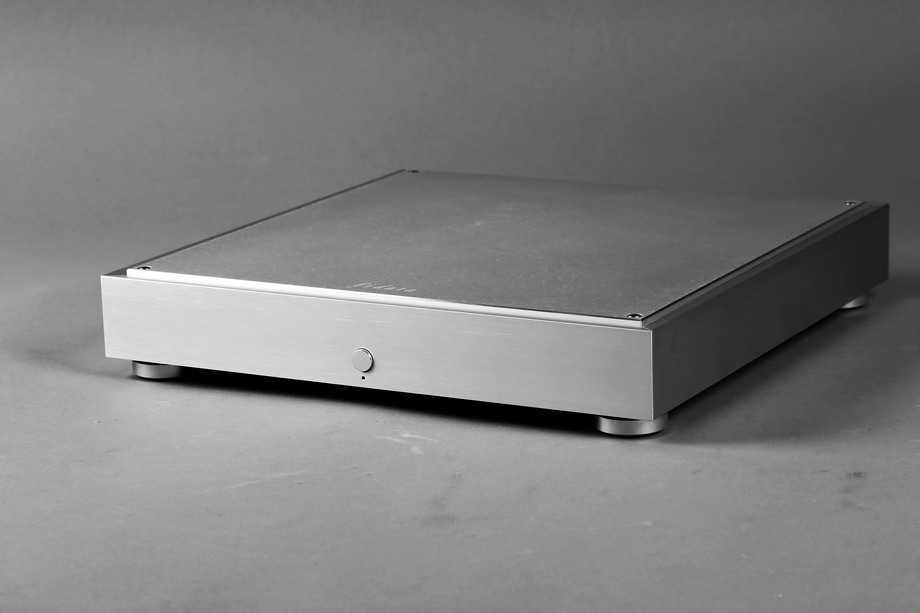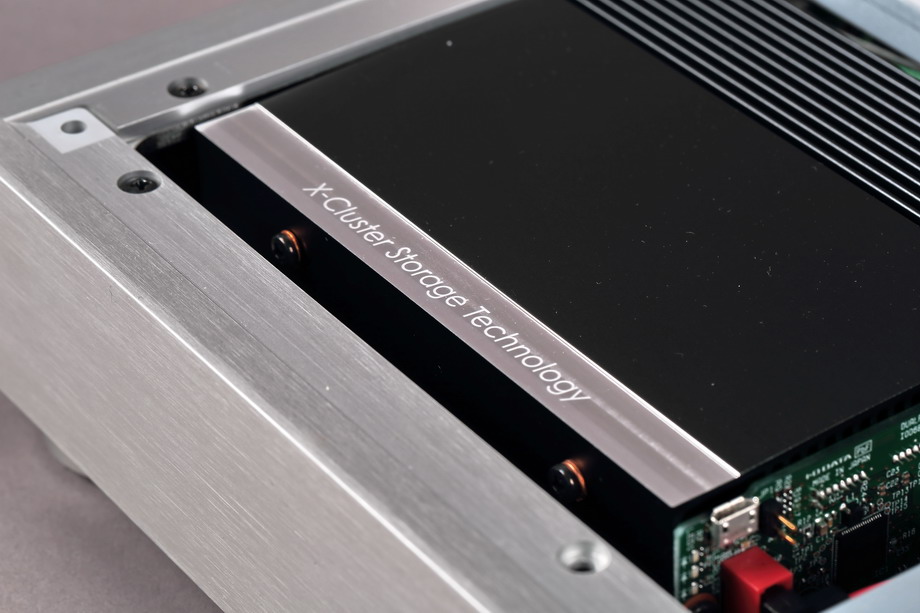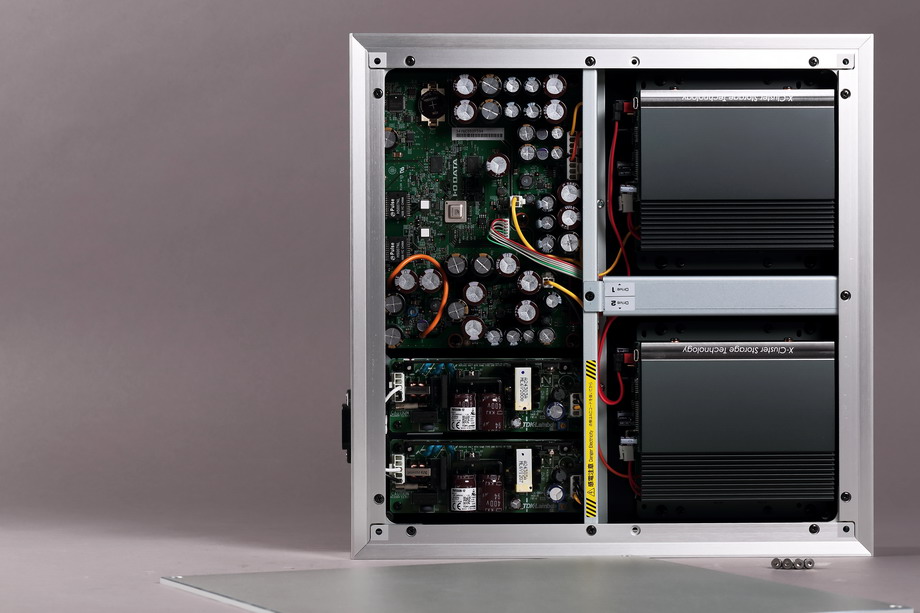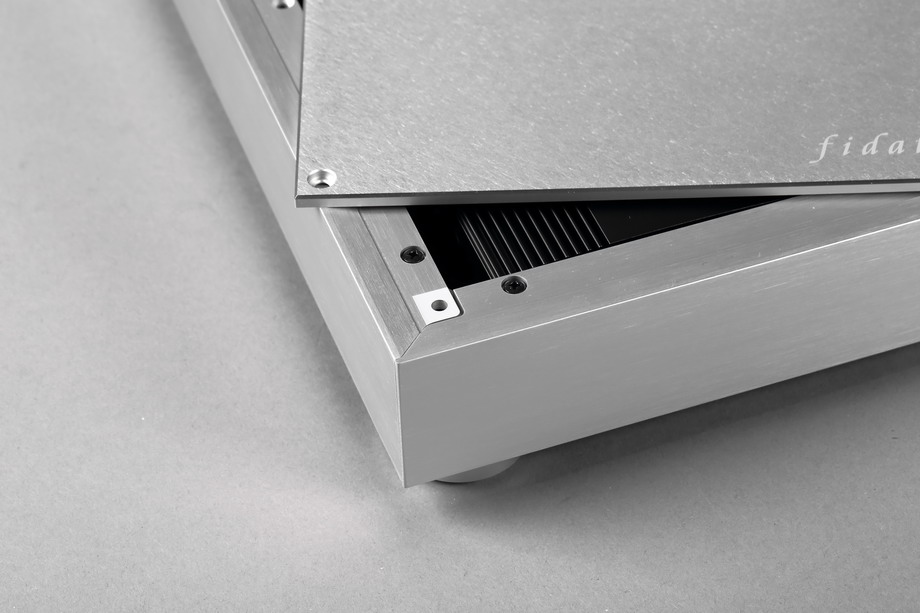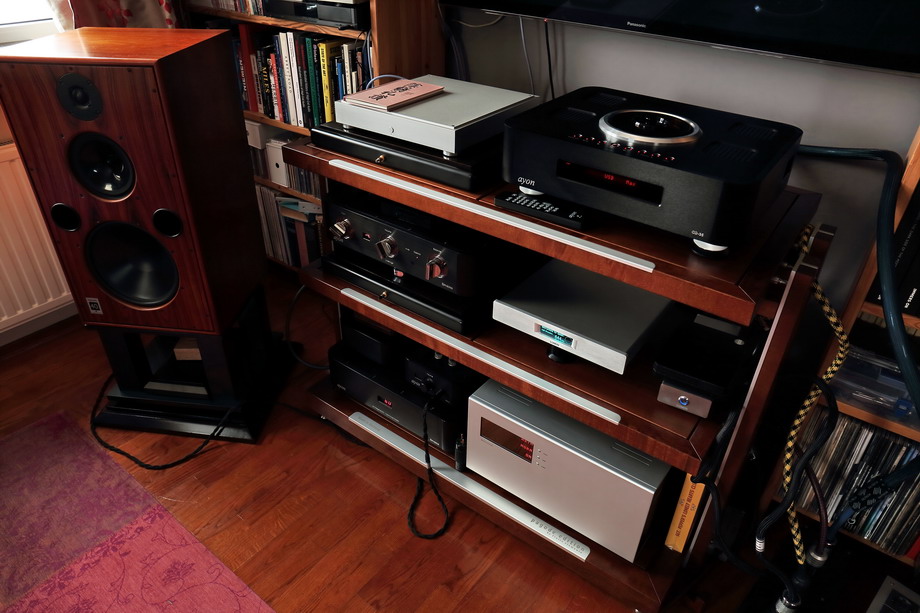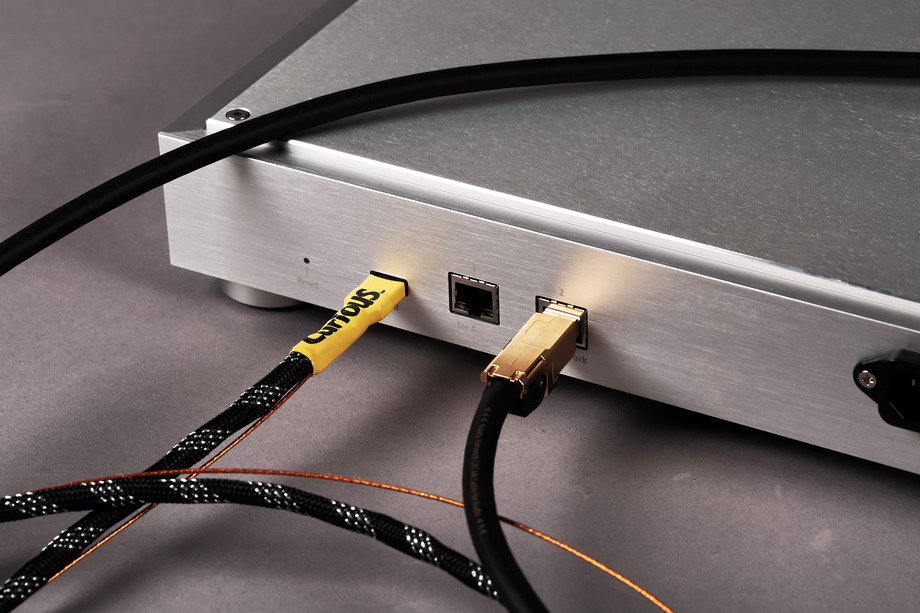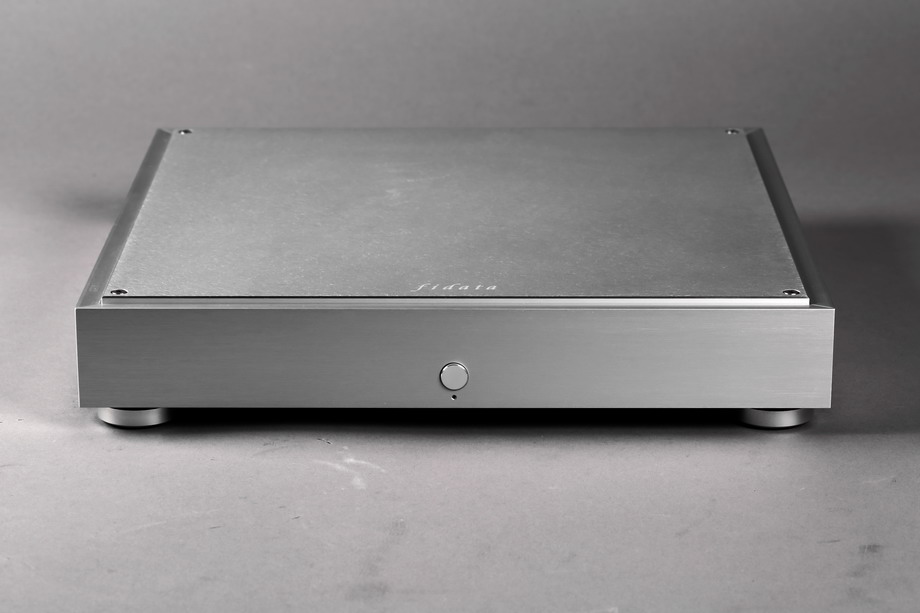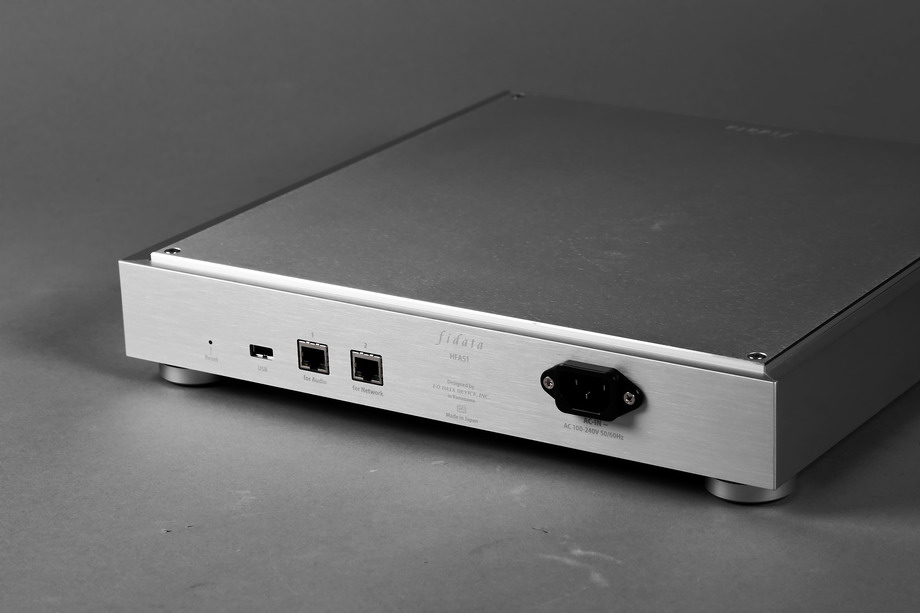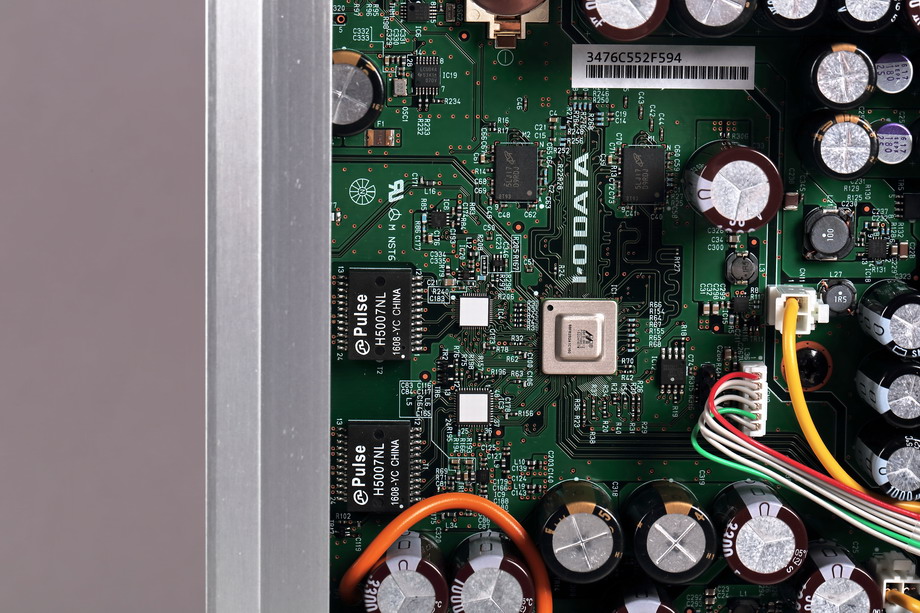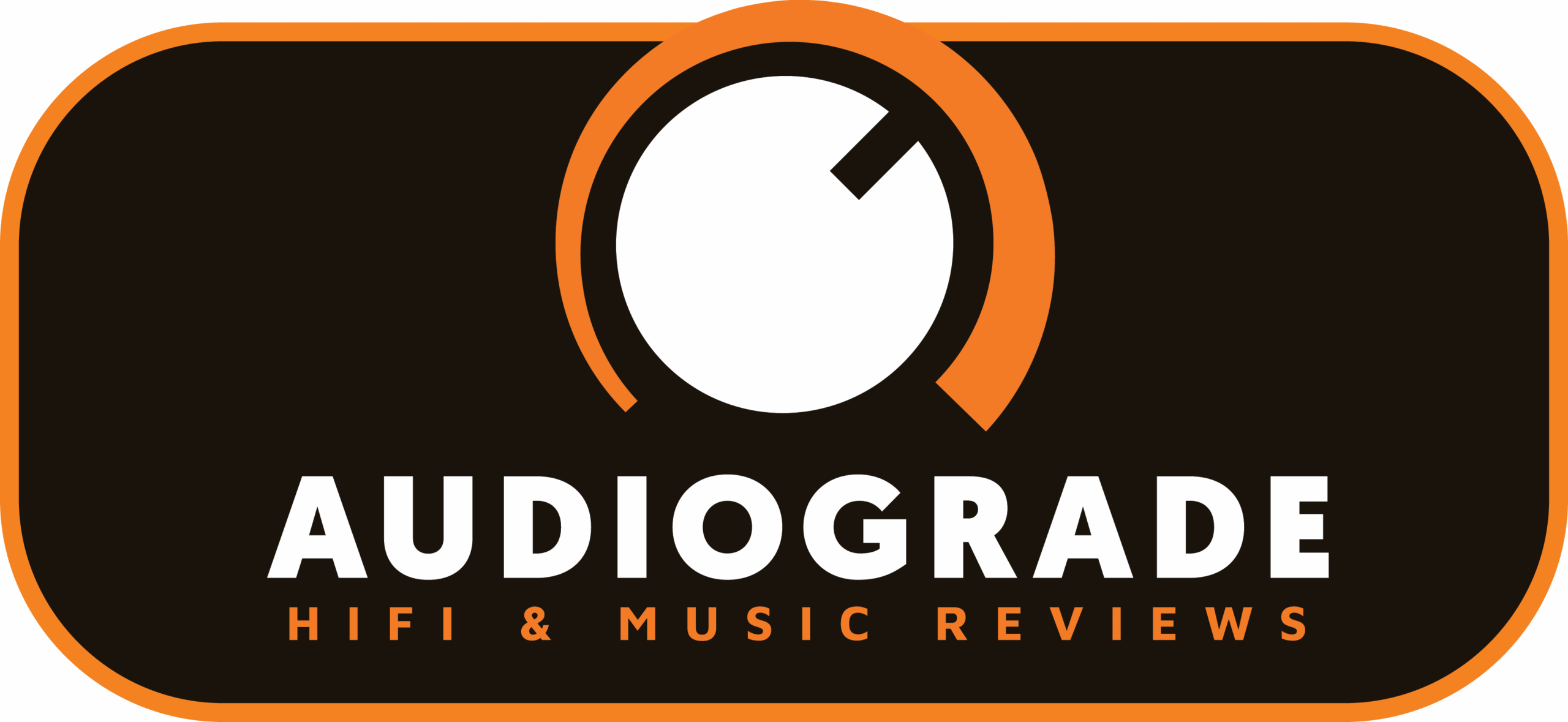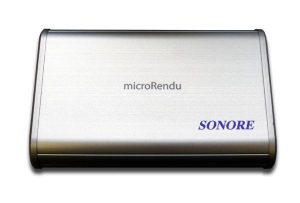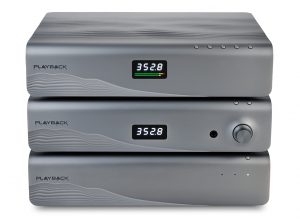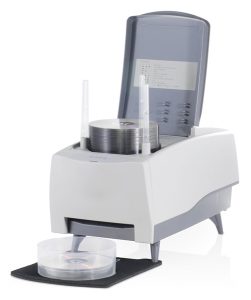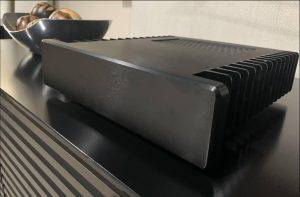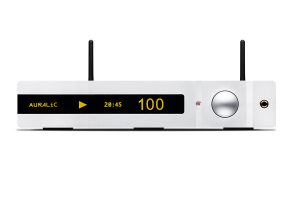Before our eyes, slowly a hierarchy of devices used to play audio files begins take a shape. For a long, too long time, there was no clarity in this matter and we had to wade through various offers, each of which seemed to be the "right one", that its producer declared to be "the best", that one or other faction of users put on a pedestal. After many years, it turned out that it was mostly a mixture of wishful thinking and ignorance.
The choice was really big. We could play files from a computer, both from its hard drive, external disks connected to it, and also from NAS devices. It could be an ordinary computer, or "dressed up" to look like an audio device. We could send a signal from multimedia audio-video players—and therefore specialized computers—also from internal, external and network drives. One could play music also via Blu-ray players. Finally, one could stream files through specialized audio players—stationary and portable. And each of these solutions was advised as the "only" or "ultimate" one.
In fact, almost all these proposals were just a trial, not a real solution, and few had anything to do with high-end audio. Now the matter clarifies and if I could design a pyramid to present the usage of audio files, it would look like pyramid, with BR player and simple computer on the bottom and high-end file player or three-computer based system on the top.
The same applies to the types of files being played. It's clear now that the most important way to listen to music is to stream the signal through one of the services, preferably Quobuz and Tidal, because they offer lossless CD-quality and hi-res files. One could say that in most cases this way is enough and that 90% of music listened to by music lovers and audiophiles will ultimately come straight from the "Internet". However, at the very top of this pyramid, which is where the high-end audio systems reside, we have specialized file players with high-quality NAS disks and specialized computer systems, popular mainly in Japan.
HFAS1-XS20U
FIDATA is a brand owned by I-O Data, a Japanese computer peripheral manufacturer. Founded in 1976 in Kanzawa, the company is known for almost indestructible external hard drives. Since 2016, a project was started with a goal of launching and audio network server. Two years later, the prototype was presented at the Tokyo Audio and Home Theater Exhibition. Another two years passed before the final version was ready. Since 2016, they have been offering audio network servers designed for high-end systems under the Fidata brand. This is our second encounter with their product as we already did a review of the HFAS1-S10U HERE server/files player. The device turned out to be outstanding in its category and for the first time I heard something with it, which suggests the possibilities offered by high definition audio files, primarily DSD.
Already at that time, however, their engineers were working on an even better device, which was called HFAS1-XS20U. On the website it reads that it is a "high-end model" as indicated by the letter 'X' in the name; in turn, the number '20' tells us that internal SSDs have a capacity of 2TB. Let's add that the company calls this device a "Network Audio Server" using the computer nomenclature, not entirely compatible with the nomenclature currently used in home audio. This name however surprisingly well reflects the original purpose of this device. For simplicity, I will use the name "server" in this text.
The Fidata HFAS1-XS20U server has been equipped with internal SSD memory with a capacity of 2TB. It plays virtually all available audio files, both lossy and lossless: PCM from 44.1 to 384kHz and from 16- to 32-bits, and DSD files (dsf and dff) up to 11.2MHz. We can connect it directly to the audio file player using a LAN cable (RJ-45). Similarly to the earlier model, the HFAS1-S10U, the HFAS1-XS20U will then work as a classic NAS (Network Attached Storage) offering a 2TB capacity in a secure RAID '0' or '1' data array.
The tested device offers, however more, it can also work as a transport of audio files. The signal is sent via the USB output, which can be connected to any digital-to-analogue converter with USB 2.0 input. But also in this mode the device must be connected to the home network, because we have to control it somehow. So far, this had been done using the OpenHome application (e.g. Kinsky from Linn), but since December 2017, the company has been offering its own control application Fidata Music APP, prepared for Aplle devices (i.e. with the iOS).
The high-endow HFAS1-XS20U is based on the HFAS1-S10U that we already reviewed. The company declares that the main difference between them is the X-Cluster SSD module, designed for higher capacity—in this case of 2TB—and for higher data security. Instead of one larger capacity SSD, which was the case for HFAS1-S10U, this time two smaller ones were used, 500GB each, with backup on two more discs.
These disks are controlled by selected software and are mechanically prepared for the biggest challenges - this technique Fidata named X-Cluster Storage Technology. In this system, the data is divided between two discs in such a way that the loading of data is "seen" by the power supply in the best possible way, i.e. without power consumption peaks, contributing to the formation of jitter, thus increasing the noise. To make even better use of the features of this solution, two linear power supplies were used instead of the pulse-modulated of the '10' model. X-Cluster SSD has been developed especially for HFAS1-XS20U.
The less exposed, but equally important changes, include mechanical ones—a steel chassis which the printed circuit boards are screwed to is now thicker, 3.2 mm thick and is made of a single panel—as we read in company materials—"3kg of hot rolled steel plate". If we look inside, we will also see aluminum modules with discs closed inside them, creating a stable structure for the operation of the SSD disks.
Proper mechanical stability of devices using high frequencies processing, such as computers and NAS drives, is extremely important for Fidata engineers, hence all these solutions. And let's add to them the possibility of screwing three, not four feet—which changes the sound, and the thickness of the top cover and the material from which it was made, that were selected during lengthy process. For the first time there is also a black version available next to natural aluminum one.
Since our test of the HFAS1-S10U model, the company has also added several options in the software. The most seem the one that allows user to copy CDs straight to the server and the option to use a connected external CD-ROM drive not only for ripping but also for playing discs. When you rip your discs you can save them in WAV or FLAC files, and the material is saved in AccurateRip mode, plus the information about the recordings and covers are downloaded from Gracenote. When playing CDs, we can use all the information about the album as if it we listened to files—the system automatically connects to the Gracenote database, and the user sees all the data as he would for files stored on disc.
FIDATA in High Fidelity
- AWARD: BEST PRODUCT 2018 Fidata HFAS1-S10U HERE server/audio files transport
- TEST: Fidata HFAS1-S10U HERE server/audio files transport
SOUND
Fidata → router → Lumïn T1 → Synology → router → repeat
Comparing the Fidata server to my home Synology server is like comparing a bicycle to a luxury cabriolet. It might seem you should feel the same wind in your hair, the same sense of freedom, and yet everything is different. The sound of Fidata is many times more resolving, which in itself would be enough for the entire review. Because the resolution is related to all the sound attributes quoted by me in other tests.
Switching between these signal sources, I immediately caught a certain pattern, namely that the sound from the Japanese server was much more open and darker at the same time. Darker, which worked great on Billie Holiday recordings encoded in DSD, because music played in this way lowers the center of gravity and deepens. The first impression is that there is less treble and the sound is less transparent. However, this is an illusion that passes quickly. Holiday's voice was stronger, more substantial and gained on three-dimensionality—an Achilles heel of music played from files.
The opening of the sound in turn was best heard with recordings of Miles Davis from the Kind of Blue mono version, encoded in 24/192 PCM. Switching to the Synology server literally suffocated the presentation, suppressed it. And now these two seemingly contradictory tendencies actually are the same. Although when playing music using Fidata on one hand it seems that the sound is less clear (the Holiday case) but on the other, that there is more treble (on Davis) we are in fact dealing with exactly the same mechanism that just manifests in different ways.
Since the tested server makes the sound more resolving, we get a lot more information not only about the foreground, the first layer, but also about the next ones, about what is behind the sounds, about what connects them. The vocals become more three-dimensional, but also less artificial, there is more of naturalness, vitality on them. But the better resolution means also more details and if the recording is built on them, the Fidata will deliver and the top end will open beautifully. This is exactly the same action as before, only now with the recordings not so rich with treble Fidata presents them in a more subtle way than Synology, and where there is more treble with Japanese device it is more expressive.
As a result we get a much more fluid, smoother sound. There is more information, more sound—there is more music too. The differences are significant but, you need to realize that they will actually matter only in the top systems. There, the change introduced by Fidata can be quantified even as 50% improvement, while in cheaper systems it may seem as small as say, 10%. But in each case it's a change for the better, a step towards a performance level of a very good CD or SACD player.
Fidata → router → Lumïn T1 vs Fidata → Lumïn T1
However, you must realize that the value of the Fidata server and its versatility lies in the fact that it can be connected directly to the file player, thus bypassing capricious and unpredictable routers. The music listened in this way goes in exactly the same direction as before when played from the Synology. The presentation is even more resolving, and therefore smoother and more fluid.
The first impression, just like when switching from a worse server, may be confusing. Because it is a sound without excessive contouring. Now one can hear that the greater clarity of Fidata's sound with the signal sent via router resulted partly from a slight hardening of the attack, from more massive bodies. By connecting the server directly to the Lumïn T1's input the hardening disappeared, and natural softness appeared—I call it "natural" for a lack of a better word.
It may also seem that everything is less agile, less dynamic. Such perception of a better digital sound is common and quite normal. In fact, the better performance of this type, the smoother it is, better organized and free of nervousness, and the nervousness of sound is sometimes confused with dynamics. In fact, the biggest change introduced by eliminating router from signal's path is improved microdynamics—in this case the sound begins to live.
Fidata → Ayon Audio CD-35 HF Edition
One of the most important features of the Fidata server is that it can also work as a full-fledged transport of audio files, sending an audio signal for digital-to-analog conversion in an external DAC. Let me remind you that as a server, it sends out a computer signal, files, and only the player unpacks and decodes them, recreating a musical signal from them. When in this role the LED on the Fidata's front panel is green.
This was a really great sound. The DAC in Ayon is fantastic and it did its best to keep everything in its place. And yet... This is not the first time I hear something that some IT engineers talk about, I mean those involved in the high-end audio that know the weakness of file transfer, namely that if signal leaves the device via USB output, it is permanently changed, unfortunately for worse. It is difficult to reconcile with it, it would seem that it's such a handy format for transmission of audio files and that one should fight for its constant improvement.
And one should, there is no other way—the DXD and DSD signals can be sent to the D/A converter in home system only in this way. But it is no coincidence that Ayon features also dedicated inputs for DSD in its native form; 3 x BNC. Gerhard Hirt, the owner of Ayon, after many years trying to get close to his beloved format (in terms of sound quality), which is vinyl, gave up and although he is doing everything to make the new generation of his devices offer the best sound from USB inputs, he recommends connecting his files transport using the above mentioned link.
Coming back to point, the Fidata as a player works great, so not even a small part of the players available on the market can come close to that level. However, because for a few weeks I was "exposed" to the sound of this server working with an external player, I dare say that it is its primary function, the more important one; it is supposed to be a SERVER. Although the Lumïn T1 player does not come even close in terms of sound quality to Ayon, the files played from Fidata as a server had more musical sense than the ones played by the USB link through Ayon. The latter was many times more correct and "accurate", and yet every time I wanted to listen to some files, I was happy to return to the Fidata-Lumïn system.
Summary
The Fidata HFAS1-XS20U is the best audio server I know. It sounds deeper and more velvety than the previous model. It does not try to show the contours so accurately, because it does not have to be—it is more resolving, and thus the contours are only secondary thing to tone, dynamics, etc. The offers significantly better performance when connected directly to the file player over the LAN link, but also as a classic server, through a router, it crushes everything that I had a chance to listen to so far.
As a file player, it does not make such a huge impression, although it is still one of the best file transports I've heard. The problem in this case is, as I assume, a USB connection which must be used. Although technically correct, it alters the signal for the worse and these changes can not be reversed. At least for now. It is obviouse that the technique associated with the playback of audio files is developing quite dynamically and what yesterday seemed to be the top of its capabilities is only good today.
Having said that, I should add that in my opinion even the best system for audio files playback, outside of workstations in recording and mastering studios, is not able to threaten, in terms of sound quality, a well-prepared CD or SACD played using a high-end CD/SACD player. Today we are closer to that than yesterday, but still not quite there. Not yet.
DESIGN
Fidata HFAS1-XS20U is an inconspicuously looking, but very solidly built product. It has the form of a low rectangular box with walls made of thick aluminum panels. The bottom is made of thick steel sheet and the upper wall is made of aluminum; the thickness of the latter was selected based on listening sessions. The device stands on four aluminum feet. However, two rear ones can be unscrewed and replaced by a single one, there is an additional hole prepared for it. Fidata engineers believe that the sound changes depending on the number of feet so each user should check for himself which is the better sounding version for him.
On the front there is a single power button and a multi-colored LED. It indicates the status of the device and the mode of operation; I would like to remind you that HFAS1-XS20U can work either as a server, connected using a LAN cable to the router or directly to the file player—possibly a computer —or as a file player, connected to a digital-to-analog converter via a USB cable. In both cases it must be connected to the router, because in this way it is controlled by the Fidata application or Kazoo from Linn. There are two LAN and one USB sockets on the rear side, as well as an IEC power socket. The LEDs in the LAN sockets can be turned off—Fidata people claim that this improves the sound.
The interior is split across with a steel shield. In the back part there is a PCB with a micro-computer and two, independent linear power supplies. The power supply is quite advanced; most of the microcomputer board is occupied by capacitors that eliminate grid ripples and by voltage regulators. The microprocessor works with two external memories with their own battery. The LAN inputs are isolated using separating transformers.
X-Cluster Storage Technology modules are on the other side of the shield, powered by separate power supplies. Their mechanical design is particularly sophisticated - they are enclosed in aluminum screens that also act as heat sinks. The advanced power supplies were placed also under those shields. A truly high-end design.
Technical specifications (according to manufacturer)
- Storage capacity: 2.0 TB
- SSD capacity and number: 500 GB x 4
- Supported files formats: WAV, mp3, WMA, m4a, m4b, ogg, FLAC, aac, mp2, ac3, mpa, aif, aiff, dff, dsf
- Supported files resolutions:
- PCM | 44.1, 48, 88.2, 96, 176.4, 192, 352,8, 384 kHz/16, 24, 32 bits
- DSD | 2.8, 5.6, 11.2 MHz/1 bit
- Network standard compliance: UPnP AV, DLNA 1.5
- Power supply: 2 x linear PS
- Maximum power consumption: around 32 W
- Dimensions (W x D x H): 350 x 350 x 65 mm
- Weight: 7.3 kg
MICRO-TEST
LAN Cat 6A HFLC cable
In December 2017, together with the control application, Fidata presented two cables, the first ones in company's history: LAN HFLC and HFU2 USB cables. It's an absolutely understandable, natural move but it only makes sense if the cables are either (1) better than the competition in a given price range, or (2) create a synergistic whole complementing the basic product, in this case the server HFLC or file player HFU2 . I took a closer look at the HFLC cable, which I used to connect the HFAS1-XS20U operating in the server mode with the Lumïn T1 file player.
The HFLC is a Cat 6A LAN cable, specially designed for use in audio applications. It is terminated with probably the best plugs on the market today, shielded, gold-plated and mechanically well-designed, the MFP8 RJ45 from Telegärtner Japan Limited. 7mm concentric cables is made of silver-plated oxygen-free copper conductors (OFC), separated into independent, twisted pairs. The cables are made in Japan, which, as the company materials claim, guarantees full control over the production process and compliance with Fidata standards. The cable is available in lengths of 1.5, 3, and 10 m.
For five years I have been using LAN-2.0 PL cables from Acoustic Revive, that I am really happy with (see HERE). Made of 7N copper, custom-made for a man, for whom on one hand mountain crystals placed around power systems make a huge difference to the sound quality, on the other is a cool perfectionist, whose company specializes in the production of ultra-precise surgical instruments, were in short, better than almost all LAN cables I had at home.
Until today that is. The Fidata HFLC is a step forward in every respect, actually two or even three of them. I remember the flood of e-mails, that I received in 2012 from engineers who questioned, undermined and even ridiculed what I wrote then, first of all that the LAN cables change the sound. Today, when this is not only clear and repeatedly proven, also with measurements, I should feel vengeful satisfaction, but actually I feel only sadness, that probably otherwise sensible, intelligent people did not bother to verify my "revelations" and listen for themselves. The sadness is even greater, because other engineers, much better informed and, as it turns out, educated, unfortunately not from Poland but from Japan, are much more advanced and it will be difficult to catch up with them.
The difference between the Acoustic Revive cables (I haven't had a chance to listen to their latest 7N models yet) are quite clear. These are not differences barely caught on the edge of perception, but basic ones. Because the basic one is a much higher resolution of the Fidata cable. Everything is stronger, more saturated and closer to us with it. The sound is darker and deeper. The bodies are clearer. The sound seems louder, but one doesn't want to lower the volume at all, but rather to turn it up—so much new is happening in the music with this cable.
As you can see, there is much to do in the world of computer audio. Each step, however, brings us closer to the real high-end.
I-O DATA DEVICE, INC.
Price (when reviewed): 8900 EUR
MADE IN JAPAN
Text: Wojciech Pacuła
Pictures: Wojciech Pacuła




